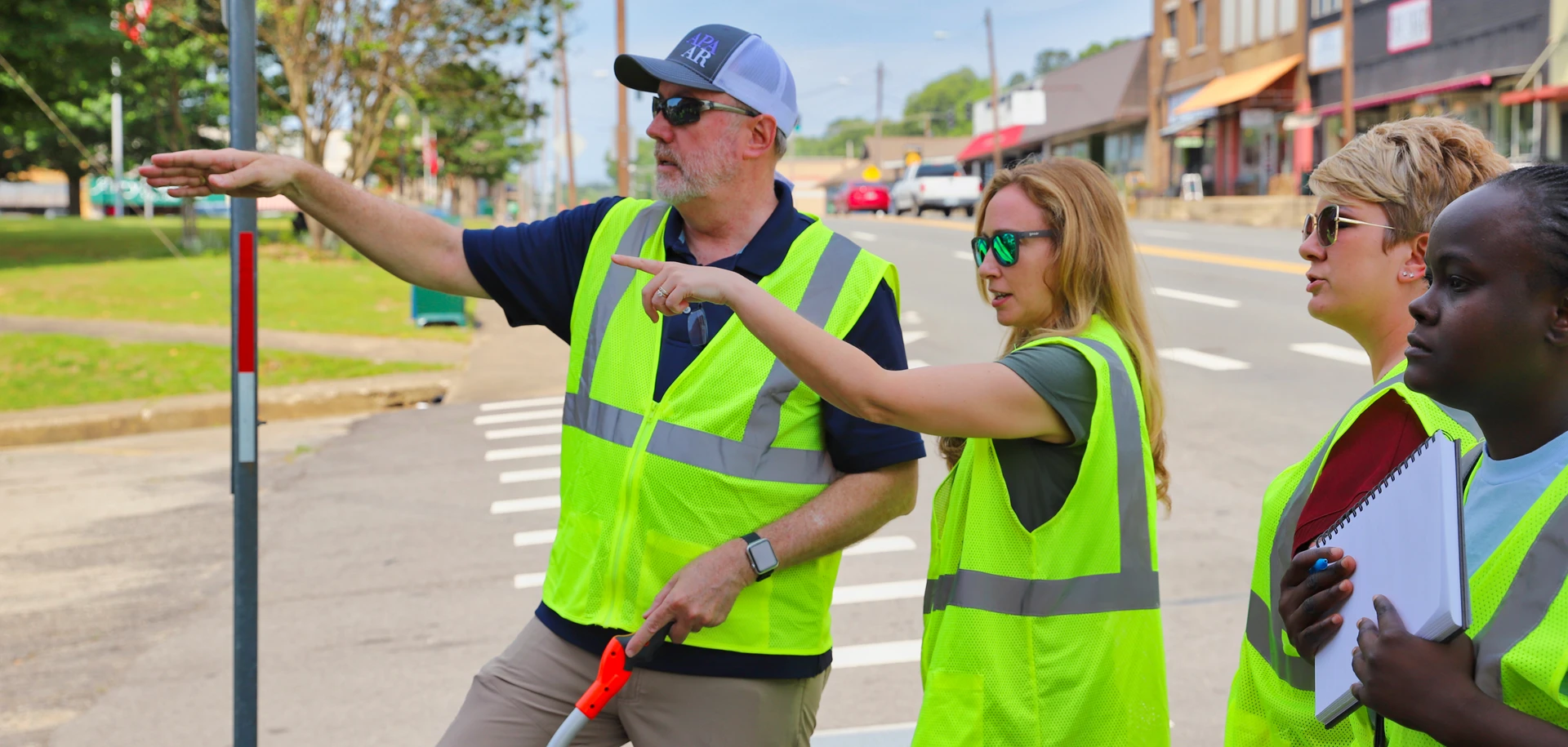
Dave Roberts, PLA, ASLA
Senior Vice President - Planning & Business DevelopmentMany cities prioritize improving walkability in downtowns and commercial areas, not just to enhance safety or to develop community character, but because there is real potential for financial return on investment. Investments in walkability, which measures an area’s ease of connectivity via non-vehicular transportation, can include sidewalks, multi-use paths, streetscape enhancements, and traffic-calming measures. While these projects might be more often categorized as infrastructure, they do much more than provide a mode of transportation. They have the power to transform local economies.
Places where people feel safe and comfortable walking are places where businesses can thrive. Bustling downtown districts offer a variety of things to do - restaurants, coffee shops, art galleries, and breweries - all within walking distance of one another. Increased foot traffic creates higher property values in these areas and the surrounding neighborhoods as well. Over time, the tax value per acre in these dense, walkable areas will outpace areas that are more dependent on vehicular traffic. This has been confirmed in multiple studies by Urban3, a company specializing in revenue modeling and cost of service analysis for cities.
Not only do these compact, walkable places generate more tax revenue per acre, they require less extensive infrastructure networks compared to sprawling, car-dependent developments. For cities, this results in lower costs for road maintenance, utilities, and public services. It’s a win-win.

Any city, big or small, with goals to invest in walkability should consider these steps:
- Conduct a Walk Audit: Begin by assessing the current state of pedestrian infrastructure. At Crafton Tull, I work with cities across the state hosting walk audits that bring together city and business leaders. We identify areas lacking sidewalks, dangerous intersections, and discuss best practice site planning methods. The walk audit and final report helps prioritize improvements and allocate resources effectively.I recently hosted a walk audit in Prairie Grove with Mayor David Faulk and 20 members of the community. Mayor Faulk believes the walk audit identified changes that could create a more prosperous downtown. “The walk audit has been a great asset to us, and I would highly recommend this activity to all municipalities,” the mayor said.
- Engage the Community: Involve residents, business owners, and other stakeholders in the planning process. Their input can help ensure that improvements meet local needs and build support for larger initiatives.
- Develop a Pedestrian Master Plan: Create a comprehensive strategy that outlines short-term and long-term goals for improving walkability. This plan should integrate with existing transportation and land-use policies to ensure a cohesive approach. The planning team at Crafton Tull is well-versed in creating bicycle and pedestrian master plans that prioritize investments and unite communities in a shared vision.
- Implement Quick Wins: Start with low-cost, high-impact improvements such as repainting crosswalks, installing pedestrian signals, or creating pocket parks. These visible changes can build public support and demonstrate immediate benefits.
- Establish an Overlay District: Update land-use regulations to encourage mixed-use development, higher densities in appropriate areas, and pedestrian-oriented design standards. Over time, this can help create the type of built environment that supports walkability.
- Invest in Key Corridors: Identify main streets or commercial districts that could benefit from significant pedestrian improvements. Concentrate initial investments in these areas to create showcase projects that can catalyze further development.
While the initial costs of improving walkability can be substantial, the long-term economic benefits far outweigh the investment. Cities that prioritize walkable infrastructure often see returns in the form of increased tax revenues, reduced infrastructure maintenance costs, and a better sense of community character.
The benefits of walkability investments can compound over time. As initial improvements attract more pedestrians and businesses, they create a cycle of increased activity, further investment, and economic growth. This snowball effect can transform struggling urban areas into vibrant, prosperous districts that contribute significantly to the city's overall economic health. Connecting these walkable districts to the surrounding neighborhoods will increase visibility and activity for the businesses who will benefit from the foot traffic.
Investing in infrastructure that promotes walkability represents a strategic economic development opportunity for cities. As cities compete for talent, businesses, and investment, those that prioritize walkability will be well-positioned to thrive economically while offering a higher quality of life for their residents. The journey towards enhanced walkability may begin with small steps, but it leads to transformative economic outcomes that can reshape the urban landscape for generations to come.
Related Content
Pulaski, Saline, Faulkner + Lonoke Counties, AR